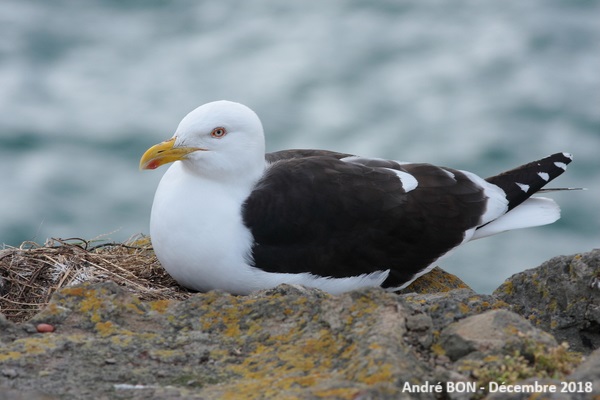

| Kelp Gull (Larus dominicanus (Lichtenstein, 1823)) |


|
|
Scientific name: Larus dominicanus (Lichtenstein, 1823) Common name: Kelp Gull Other names: Dominican Gull French name: Goéland dominicain Order: Charadriiformes Family: Laridae Size: Body size: 56 to 64 cm; Wingspan: 128 to 142 cm; Weight: 900 to 1335 g Habitat: Mainly coastal regions but also sometimes on large lakes or reservoirs further inland. Food: Very varied diet consisting of molluscs, fish, reptiles, amphibians, small arthropods, small birds and small mammals. It also feeds on waste and carrion and follows boats at sea. It also attacks whales when they surface. Nesting: The Kelp Gull generally nests in colonies made up of ten to one hundred pairs. The nest is a large pile of dry plants. It is located at the foot of a rock, a tree or a bush. There are usually three eggs per clutch. Migration: Mainly sedentary, however some birds move north during the southern winter. Geographic area: Coasts and islands of the southern hemisphere. There are 5 subspecies. Larus dominicanus dominicanus is found in South America, Australia and New Zealand. Larus dominicanus vetula is found in southern Africa. Larus dominicanus judithae is found in the sub-Antarctic islands of the Indian Ocean. Larus dominicanus melisandae is found in the south and southwest of Madagascar. Larus dominicanus austrinus is found in Antarctica and nearby islands. |
The Kelp Gull has black upperparts and a white tail. The upperside of the wings has a white trailing edge and white mirrors towards the tip. The head, neck and underparts are white. The bill is yellow with a red spot. The eyes are yellow and surrounded by an orange-red eye ring. |
| [To know more about the Kelp Gull] [Next picture] [Top] |

|
The white trailing edge of the wings and the mirrors at the tip are clearly visible in this photo. |
| [To know more about the Kelp Gull] [Previous picture] [Top] |

|
Not many humans on the beach but some nice ornithological observations. |